The credit union industry is full of leaders who have made the transition from bank to credit union and in the process have shifted their focus from profits to service.
Callahan Associates has hosted a number of these professionals at the more than 100 executive roundtables the firm has hosted since 2011. These former bankers followed their own path to credit union land but share with their peers an appreciation for and commitment to the movement’s member-first ethos and business practices.
What attendees share at an executive roundtable stays at the executive roundtable, but seven reformed bankers agreed to go on record to share insight and advice based on their own experiences making the move to not-for-profit financial services.
Here’s some of what they had to say.
Jimmy Lovelace, Senior Vice President of Member Experience, Community First Credit Union of Florida

Jimmy Lovelace, Senior Vice President of Member Experience, Community First Credit Union of Florida
Jimmy Lovelace joined Community First Credit Union of Florida ($1.8B, Jacksonville, FL) as a branch manager in August 2014, moved up through a couple of retail roles, and became senior vice president of member experience in 2018. He spent 10 years with Bank of America, starting as a teller out of college and eventually becoming a vice president-level branch manager.
What was the hardest part of transitioning from banking to credit unions? What was the best part?
Jimmy Lovelace: The most difficult part was finding the courage to change teams. I knew very little about the credit union movement and was well acclimated to banking culture, but I was becoming disenfranchised by the multiple changes in strategic direction and felt many of the things I was being asked to do made it difficult to provide a great customer experience.
At Community First, I found everything I loved about my role in retail with none of the red tape. The inclusive nature of our cooperative provided a fertile ground for me to grow my talents and my career. The best part about making the transition was learning that if it doesn’t make sense, we can change it. Credit unions are far more agile than any bank I’ve been a part of.
What is one piece of advice you have for someone switching to credit unions?
JM: It’s going to take some time to adjust. Many of the processes and systems in a bank are so formalized that you’re often there merely to run the playbook you’ve been given. Some employees that come to credit unions from banks have a hard time with this adjustment. This is a relationship business, and credit unions haven’t forgotten that. If you care about helping people and want to make a difference, then make the switch. And then, just breathe.
What did five credit union frontrunners in analytics offer as their best advice for newcomers to the business analytics game? Find out in Expert Advice From Analytics Debuts And Do-Overs.
Pam Hatt, Vice President of Marketing, Pen Air Federal Credit Union
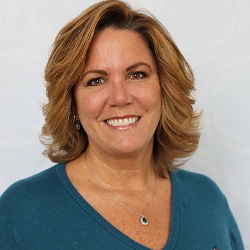
Pam Hatt, Vice President of Marketing, Pen Air FCU
Pam Hatt joined Pen Air Federal Credit Union ($1.5B, Pensacola, FL) as a marketing manager in April 2012 and became vice president of marketing in April 2018. She was in banking for 22 years, including 16 years at Regions Bank, most recently as vice president in charge of the bank’s marketing from Pensacola to Jacksonville.
What was the hardest part of transitioning from banking to credit unions? What was the best part?
Pam Hatt: Understanding the difference in culture was my biggest hurdle. I had worked for a bank for 22 years and never paid attention to the difference. Now, I’m a huge advocate for credit unions. Another tough part of my transition was having to prove myself all over again and gain people’s trust.
The best part is the culture. Banking should be about relationships and people helping people, not about tick marks, inflated goals, and behaviors and activities to appease stockholders. Once I understood the lingo, business model, and the culture I thought to myself Why did I wait so long to make the switch? Working for a credit union is much more aligned with my personal values and that was a game changer for me.
What is one piece of advice you have for someone switching to credit unions?
PH: Run, don’t walk, and apply to work at a local credit union today. You won’t regret it.
Andy Marshall, Chief Operating Officer/Executive Vice President, Interra Credit Union
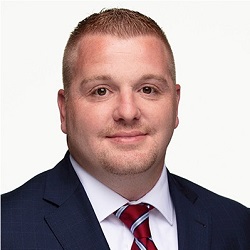
Andy Marshall, COO/EVP, Interra Credit Union
Andy Marshall joined Interra Credit Union ($1.2B, Goshen, IN) in September 2014 as chief lending officer and moved into his current position in 2016. He had been with iAB Financial Bank for 10 years, most recently as first vice president and director of retail and small business banking, and prior to that he worked for a large mortgage lender.
What was the hardest part of transitioning from banking to credit unions? What was the best part?
Andy Marshall: I found the capabilities of the legacy core systems to be subpar compared to what I had available on the bank side. This accounted for frustration and excess lag in progress toward achieving several strategic objectives.
The best part of the transition was the focus on consumer service and products. In the banking arena, the focus on profitability and shareholder return meant strategic decisions many times went against what was best for the customer. Credit unions are the lifeblood of consumer banking in the Midwest, and more people should be aware of the unnecessary fees and terms they are paying at bank competitors.
What is one piece of advice you have for someone switching to credit unions?
AM: Understand the company culture, strategic objectives, board makeup, and anything you feel is pertinent to your future. I have found credit unions to be much more mission-focused and consumer banking-centric, so make sure your passion, skills, and competencies align with the credit union’s approach to business.
Melissa Morgan, Chief Retail Officer, Patelco Credit Union
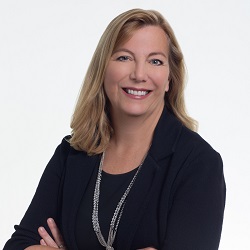
Melissa Morgan, Chief Retail Officer, Patelco Credit Union
Melissa Morgan joined Patelco Credit Union ($7.1B, Pleasanton, CA) in 2014 as chief retail officer after more than 20 years in banking. She began her career with Citibank in New York, then moved to Wells Fargo in California, gaining experience in business analysis, marketing, and portfolio and retail management.
What was the hardest part of transitioning from banking to credit unions? What was the best part?
Melissa Morgan: There was no hard part of the transition. It felt like I was where I should be. I’m grateful for what I learned from both Citibank and Wells Fargo. They have the resources to be leading edge in a number of areas that challenged my thinking and supported my development.
The best part about moving to Patelco is the alignment and unity around mission at all levels of the organization. As a mission-driven organization, our priorities are clear. This passion to make a difference attracts a special group of people, and that makes the job even more rewarding.
What is one piece of advice you have for someone switching to credit unions?
MM: Expect to be challenged to think differently and more broadly. Ask yourself if the mission aligns with your values. Once you make the switch, understand what it means to be a part of the credit union movement and participate in opportunities and partnerships beyond your own organization.
Mike Dill, Chief Lending Officer/Executive Vice President, Royal Credit Union
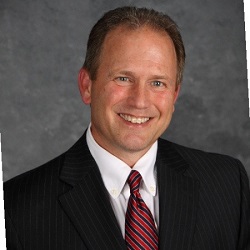
Mike Dill, CLO/EVP, Royal Credit Union
Mike Dill joined Royal Credit Union ($2.6B, Eau Claire, WI) as chief lending officer and executive vice president in June 2018 after more than 30 years in banking. He most recently was senior vice president in charge of consumer and mortgage lending in eight states for TCF Bank but developed an affinity for community-focused and not-for-profit banking while working for a small, family-owned bank and then Bremer Bank (owned by the Otto Bremer Foundation) in Minneapolis.
What was the hardest part of transitioning from banking to credit unions? What was the best part?
Mike Dill: At for-profit banks, it’s financial performance that matters. It’s about earnings per share and stock prices, about selling two more checking accounts and one more loan. It’s almost like trying to get customers to meet the bank’s needs. At Royal, our strategies and decisions are member-focused. It’s all about what benefits them. I know that sounds kind of hokey, but it is what it is, and that’s why I made the transition.
What is one piece of advice you have for someone switching to credit unions?
MD: Look at yourself and analyze where your strengths lie. Do they lend themselves to a credit union culture, to the culture of the credit union movement? If you don’t have that mentality, if that’s not who you are, you’re not going to thrive. Be honest with yourself when deciding whether to make that move.
Norm Creveling, Chief Lending Officer, Wings Financial Credit Union
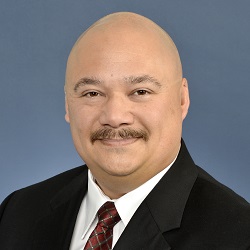
Norm Creveling, CLO, Wings Financial Credit Union
Norm Creveling had 25 years of experience in the finance industry when he joined Wings Financial Credit Union($5.3B, Apple Valley, MN) as chief lending officer in November 2017. He began his career as a telemarketer for World Financial and then worked as a mortgage loan officer at Fremont Bank in California before taking on roles in sales, credit, risk, and operations at GE Capital, Heller Financial, and Citibank. Most recently, he spent 10 years with Toyota, ultimately as president and COO of Toyota Commercial Finance.
What was the hardest part of transitioning from banking to credit unions? What was the best part?
Norm Creveling: The hardest part was remembering to call our members members and not customers. After 25 years of serving customers, I had to re-train my brain. The best part is being part of a cooperative organization and industry. Being focused on member experience and give-back versus profits for shareholders completely changed the game for me. I have finally found an origination and industry whose core values align with my own. I now have a purpose I believe in, which is to serve my employees and our members.
What is one piece of advice you have for someone switching to credit unions?
NC: I wish I had discovered the credit union industry 25 years ago, so my advice is to not waste any more time. Go find a credit union you can become a part of. It’s life changing. Go now don’t delay another moment.
Drew Putt, Chief Business Officer, Georgia’s Own Credit Union

Drew Putt, Chief Business Officer, Georgia’s Own Credit Union
Drew Putt joined Georgia’s Own Credit Union($2.5B, Atlanta, GA) in September 2017 as chief lending sales officer responsible for mortgage, centralized, indirect, and commercial lending. Since January, she has been chief business officer with a focus on the launch and expansion of commercial and private banking, respectively.
Putt was in banking for more than 20 years with First Union (now Wells Fargo), RBC, and First Citizens Bank, working primarily in sales leadership roles for retail, mortgage, home builder, and commercial banking activities in the southeastern United States.
What was the hardest part of transitioning from banking to credit unions? What was the best part?
Drew Putt: While banks and credit unions are both in the financial institution sector, credit unions have a distinct set of regulatory agencies, requirements, and acronyms. In addition, the credit union community is closely tied with tenured individuals and long-term personal relationships. Conversely, credit unions are tight-knit and look out for each other. That’s the best part.
What is one piece of advice you have for someone switching to credit unions?
DP: Spend the time and energy to not only understand the history, culture, and status quo of the organization but also the longer-term vision. For example, it was important to me to align with a credit union with a growth strategy and eye toward expanding into less-traditional assets in addition to one that was invested in the neighboring communities.
Interviews have been edited and condensed.
You Might Also Enjoy
-
What’s In A Name: Strategic Analytics Insights Manager
-
Pen Air Recaptures Its Way To Auto Loan Growth
-
How Patelco Matches Digital Design To Financial Goals
-
A Reward Program That Takes The Cents Out Of Incentive
-
Member Experience Runs Deep In Georgia
